What is Viscose, and is it Always Unsustainable?

Disclosure: Some of the links below are affiliated; we may earn a small commission if you click through and make a purchase. We only ever add brands & products we truly believe in.
What is Viscose?
Viscose is a human-made material that’s partially synthetic, and made of trees. Sometimes it’s labelled as at least somewhat sustainable due to its woody beginnings, and other times, it’s called out as totally harmful for the planet – so how is viscose really made, and how does this process really impact the planet?
What is viscose used for?
Viscose is a fairly silky, draped fabric that is often used by brands seeking a cheaper version of animal-derived silk. In the realm of fashion, it’s common to see it in women’s blouses, skirts, and flowing dresses, and even making up partially synthetic velvet.
It’s considered a lightweight and breathable material that maintains shape, is absorbent, soft and dye-fast. This makes it fabric that is widely used when it comes to printed fabrics and summer collections.
What is viscose made of?
Viscose is a cellulose material – like Tencel – meaning it is made from wood pulp. In the case of viscose, this ‘wood’ is from beech, pine, and eucalyptus trees much of the time, but it can also be made of bamboo and even soy or sugarcane.
One of the reasons Tencel is great is because of one particularly unsustainable aspect of viscose production: old-growth forest logging. Canopy, an organization dedicated to protecting forests, has found that for the production of viscose and rayon (essentially the same material), more than 200 million trees are logged each year. If these trees were placed end to end, they would circle our planet seven times!
While Tencel uses wood from certified sustainably managed sources, this is too often not the case for viscose. Less than 20% of the world’s ancient forests remain in intact tracts large enough to maintain critical biological diversity. Yet, forests in Indonesia, Canada’s Boreal and temperate rainforests, and the Amazon are being logged for fast and even luxury fashion. In fact, it’s estimated that 30% of viscose and rayon used in fashion is made from endangered and ancient forests which once were home to native plants and animals.
If fashion brands and people wearing viscose don’t know where the raw material behind it (the wood) is coming from, sadly, it may be from destroyed endangered forestry.
How is viscose normally made?
Once trees have been cut down, they are chopped into small pieces before being dissolved into a pulp. This is where viscose becomes semi-synthetic, as this is a very chemical-heavy process. Sodium hydroxide, carbon disulfide, and sulphuric acid are all used in this process and are all considered toxic.
Sodium hydroxide is highly irritating and corrosive, resulting in severe burns and permanent damage when it comes in contact with human tissue, including the eyes, which can also be permanently harmed and impaired due to exposure. In the case of carbon disulphide, evidence has suggested that exposure to this chemical by factory workers – as well as people living near viscose production facilities – can cause coronary heart disease, birth defects, skin conditions and even cancer. Meanwhile, sulphuric acid can cause severe skin burns, irritate the nose and throat, burn eyes, possibly cause blindness and difficulty breathing when inhaled by workers.
These toxic chemicals – amongst others – are used together in order to dissolve the wood chips into pulp, clean and bleach the pulp, and treat the pulp so that the solution, known as ‘viscose’, is produced. This viscose solution is then run through a spinneret, a machine that creates filaments or fibers. Finally, this cellulosic fiber can be spun into yarn and then made into fabrics used in fashion.
This chemical process can lead not only to poor health outcomes for workers, but often, to significant air and water pollution. Air emissions around viscose manufacturing facilities often include sulfur, nitrous oxide, carbon, disulfide, and hydrogen sulfide.
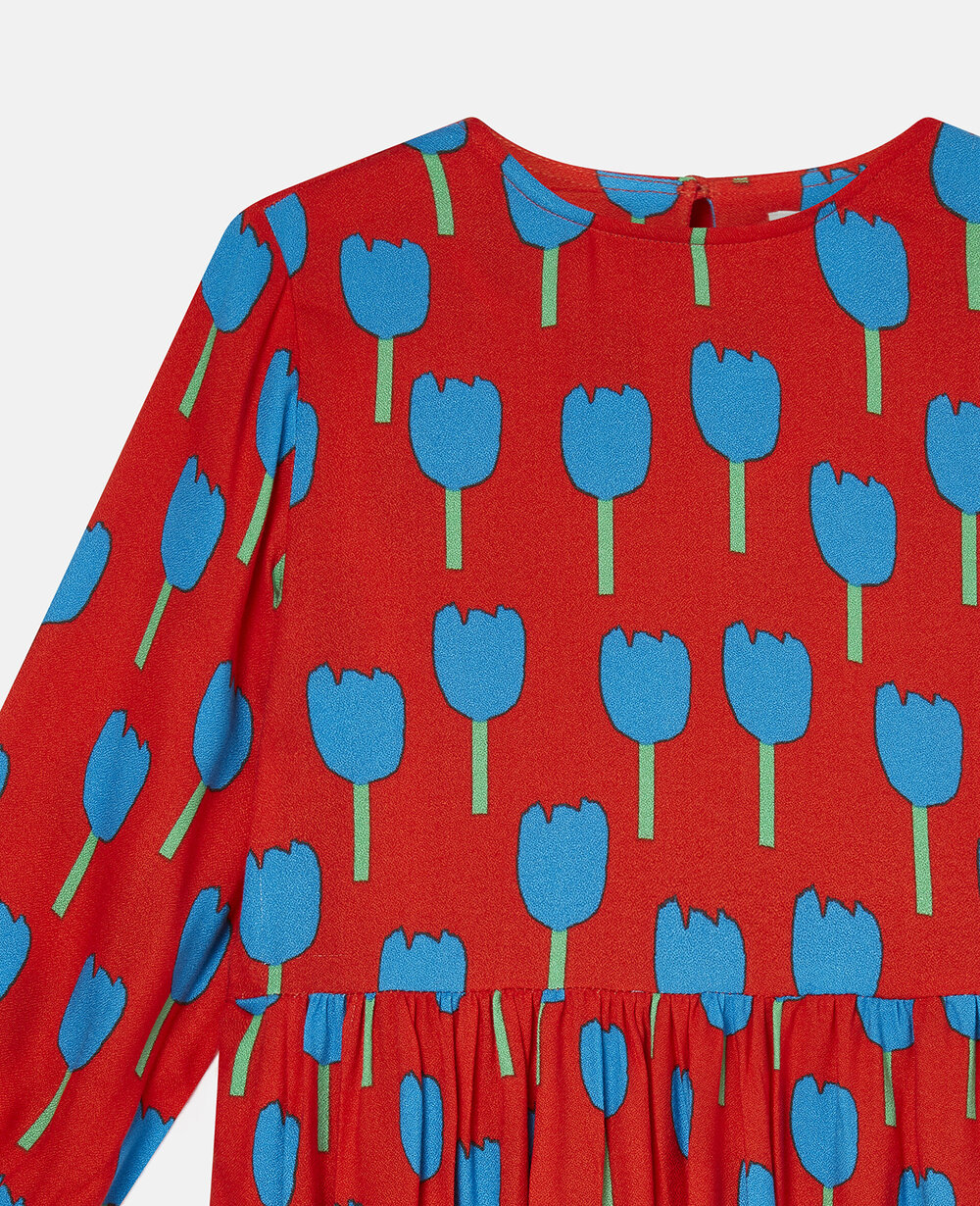
Can viscose ever be made sustainably?
While viscose is biodegradable, meaning it won’t pile up in landfill for thousands of years like polyester or another completely synthetic fabric, this alone doesn’t mean that it is sustainable. Deforestation and chemical pollution are serious issues, and the process of making viscose can also be highly water intensive – from the watering of growing trees to the significant water requirements during processing.
Fortunately, there are other ways to make viscose that are more sustainable. These processes are more expensive, so brands need to make clear commitments to prioritise the environment over profit, should they choose them. Since there’s no fashion if there’s no planet Earth, this should be an easy decision!
The previously mentioned Canopy non-profit produces an annual CanopyStyle report, which lays out the newest innovations and next-generation fibers in the textile space, that should allow us all to keep in line with set sustainability targets.
Certified Safer Logging
A great question to ask brands using viscose, is ‘where did the raw material come from?’. If brands can’t answer this for you, and if they can’t assure that the sourcing was responsible, according to a third-party accreditation, this is a real concern.
CanopyStyle offers brands plenty of information as to how they can source viscose responsibly. Brands that are a part of the CanopyStyle certification and program are also audited to ensure that ancient and endangered forests are protected from destruction. These better materials are considered ‘green-shirt’ rated.
Responsible, Closed-Loop Processing
Lenzing, the company that creates Tencel in a closed-loop system, also makes Ecovero, a viscose material derived from ‘certified renewable wood sources using an eco-responsible production process by meeting high environmental standards’.
Awarded the EU Ecolabel, Ecovero is manufactured with up to 50% fewer emissions and water impact than generic viscose. Importantly, Ecovero is also produced in a closed-loop, meaning that no harmful gases are released into the environment and are instead recovered, converted, and reused as raw materials.
Ecovero is made in a highly transparent supply chain, so brands can offer all the information that people deserve to know, about how this material was made, where, and from what.
Next-Generation Fibers, Made From Old Material
In order to combat deforestation, we cannot only rely on ‘sustainable sourcing’ of wood, from non-protected trees and forestry. We need to use less new raw materials in general. Fortunately, we don’t need to cut down so many trees in order to keep on making clothing.
Our current fashion system is one built upon overproduction, overconsumption, and waste. Because of this, more than an enormous 25 million tonnes of cotton and viscose textile waste is generated annually around the world. While we also need to slow down how we produce and consume, today, we can make use of this waste by creating viscose that is, at the very least, partially recycled.
In fact, Canopy states that ‘all 6.5 million tonnes of viscose being produced this year could be made using only 25% of the world’s wasted and discarded cotton and viscose fabrics, thereby saving forests, reducing municipal and industrial waste to landfills, and reducing carbon emissions, energy, and water use.’ What an opportunity!
Brands using more sustainable viscose
There are plenty of brands working with both Canopy and Lenzing to ensure their viscose is more sustainable, and free from harm to precious biodiversity. Here are some of our favourites, that also ensure ethical production, when it comes to the people making their clothes.
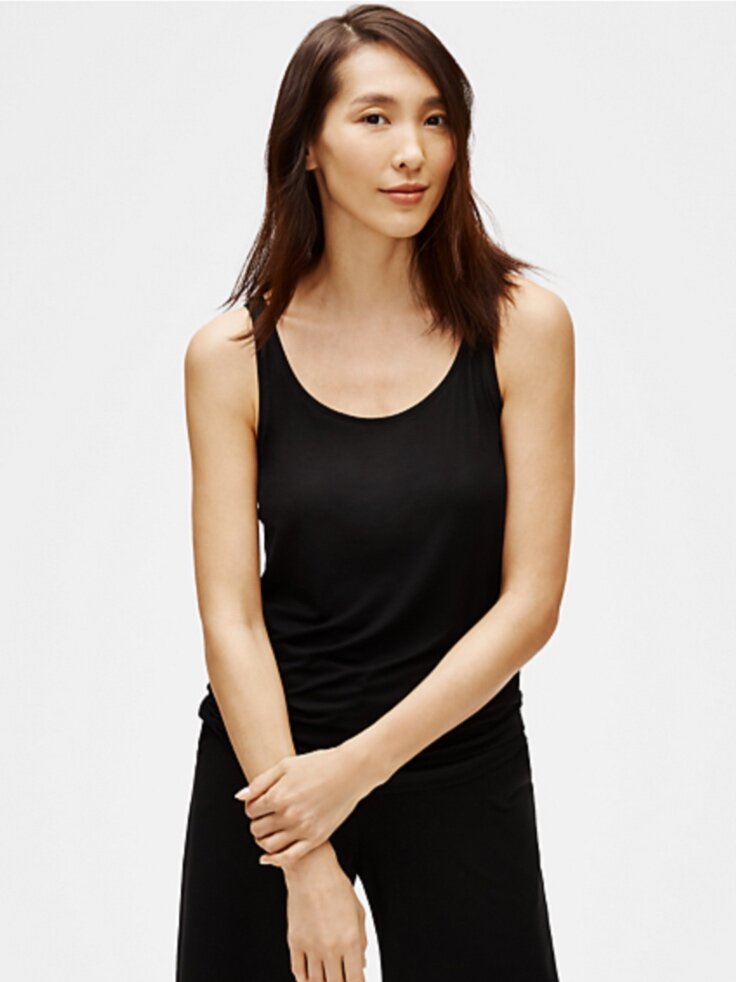
Eileen Fisher
A trailblazing brand when it comes to transparency and ethics, Eileen Fisher has a collection of viscose and rayon styles that are largely sourced from responsibly managed, legally harvested forests. What’s more, the brand is supporting the research and development of recycled cellulose materials.
The offerings from this brand, in cellulosic materials, include cardigans, pullovers, dresses, t-shirts, comfortable pants, and even velvet tops, dresses and jackets.
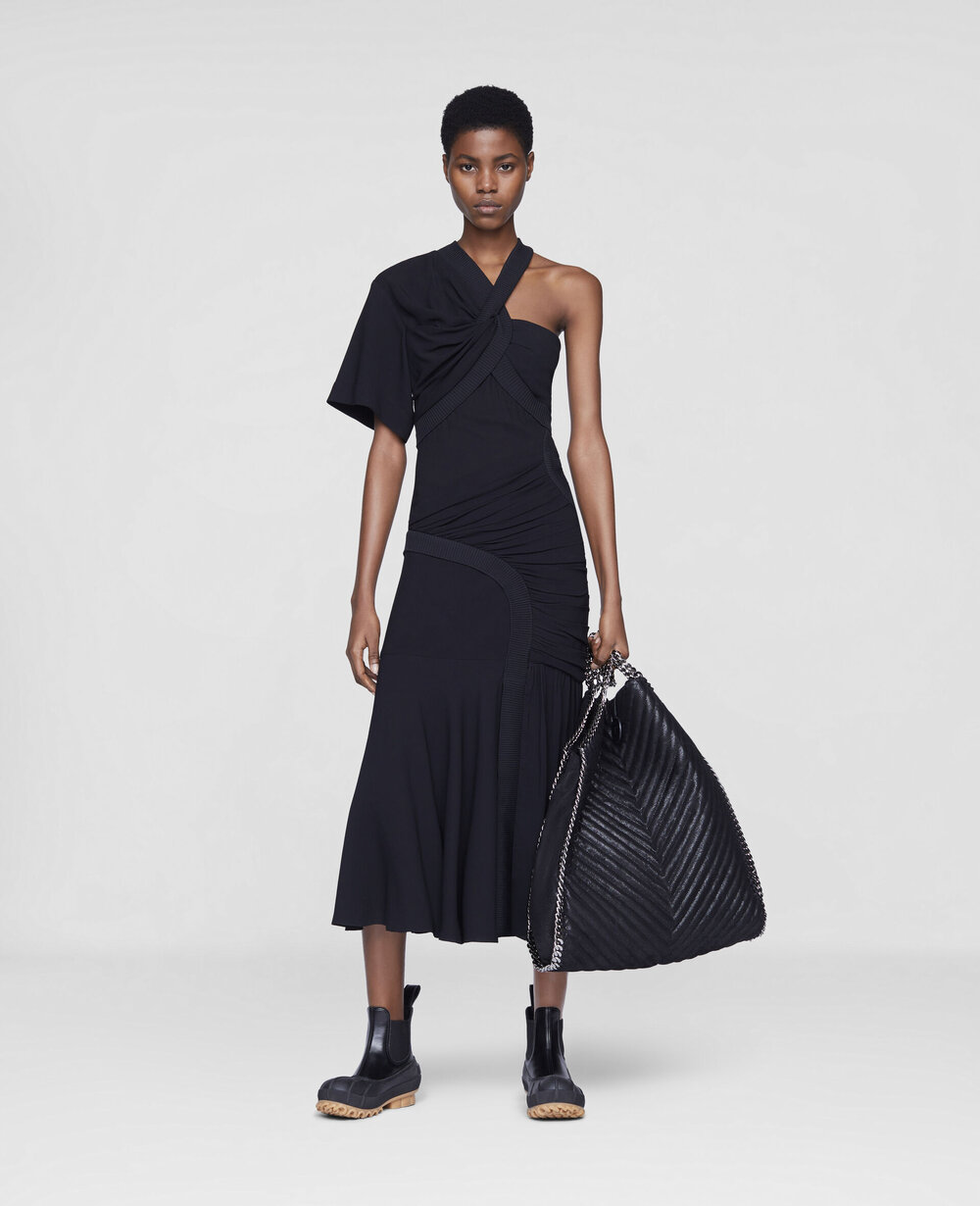
Stella McCartney
This brand, famous for its animal-friendly refusal to use animal skins, is also committed to being a ‘zero-deforestation brand’. Since 2017, all viscose in Stella McCartney’s ready-to-wear collection has been from sustainably managed and certified forests in Sweden.
Stella McCartney offers up a range of dresses, shorts, shirts, jackets, pants and co-ord suits in their more sustainable viscose material.
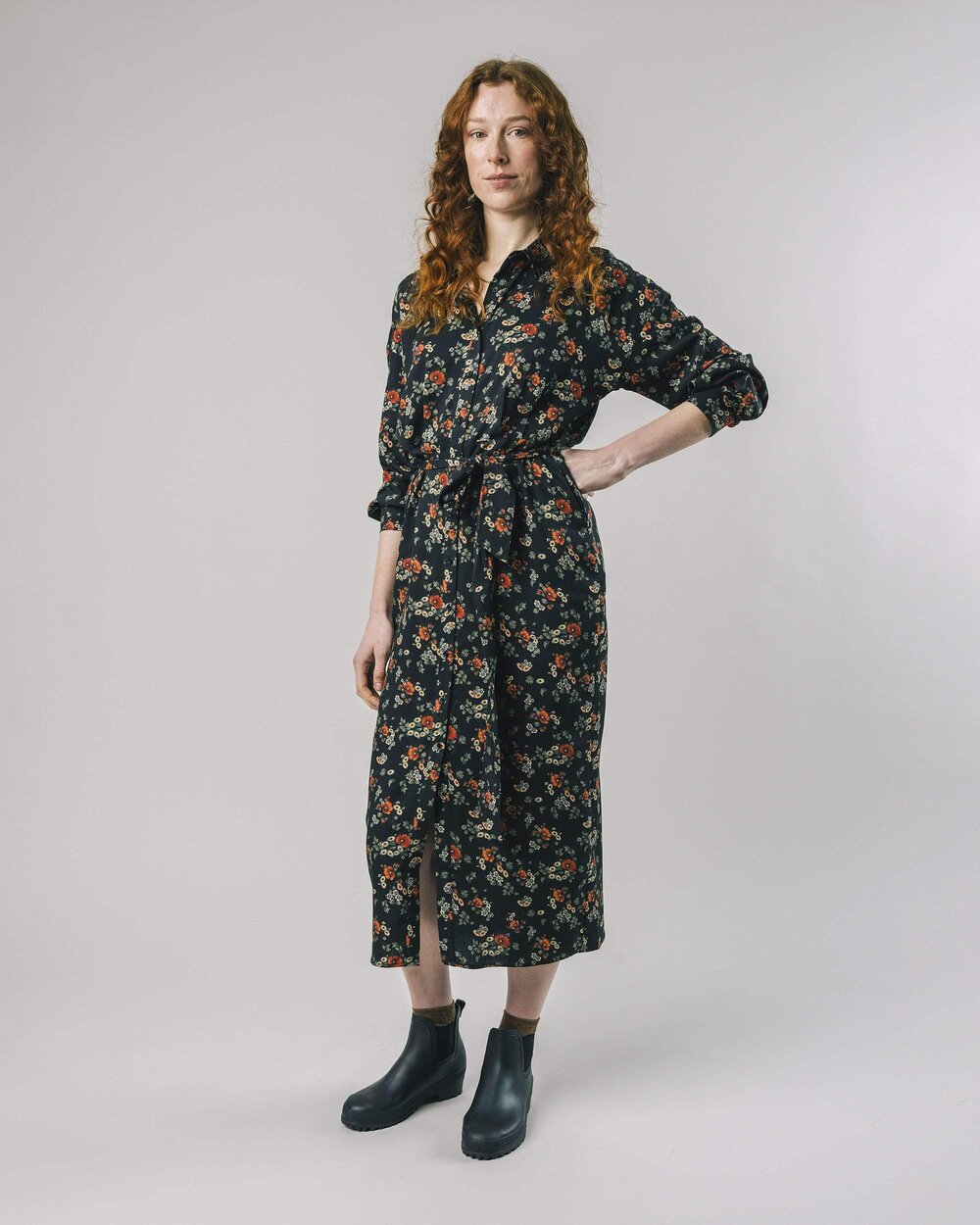
Brava Fabrics
Showcased in our brand features this past Spring, Brava Fabrics creates beautiful patterns and colors on Ecovero shirts, pants, and skirts.
They ethically produce everything close to home in Spain and Portugal.
Brava Fabrics believe in fairness & transparency throughout the entire supply chain, so they keep a close relationship with all of their tailors.
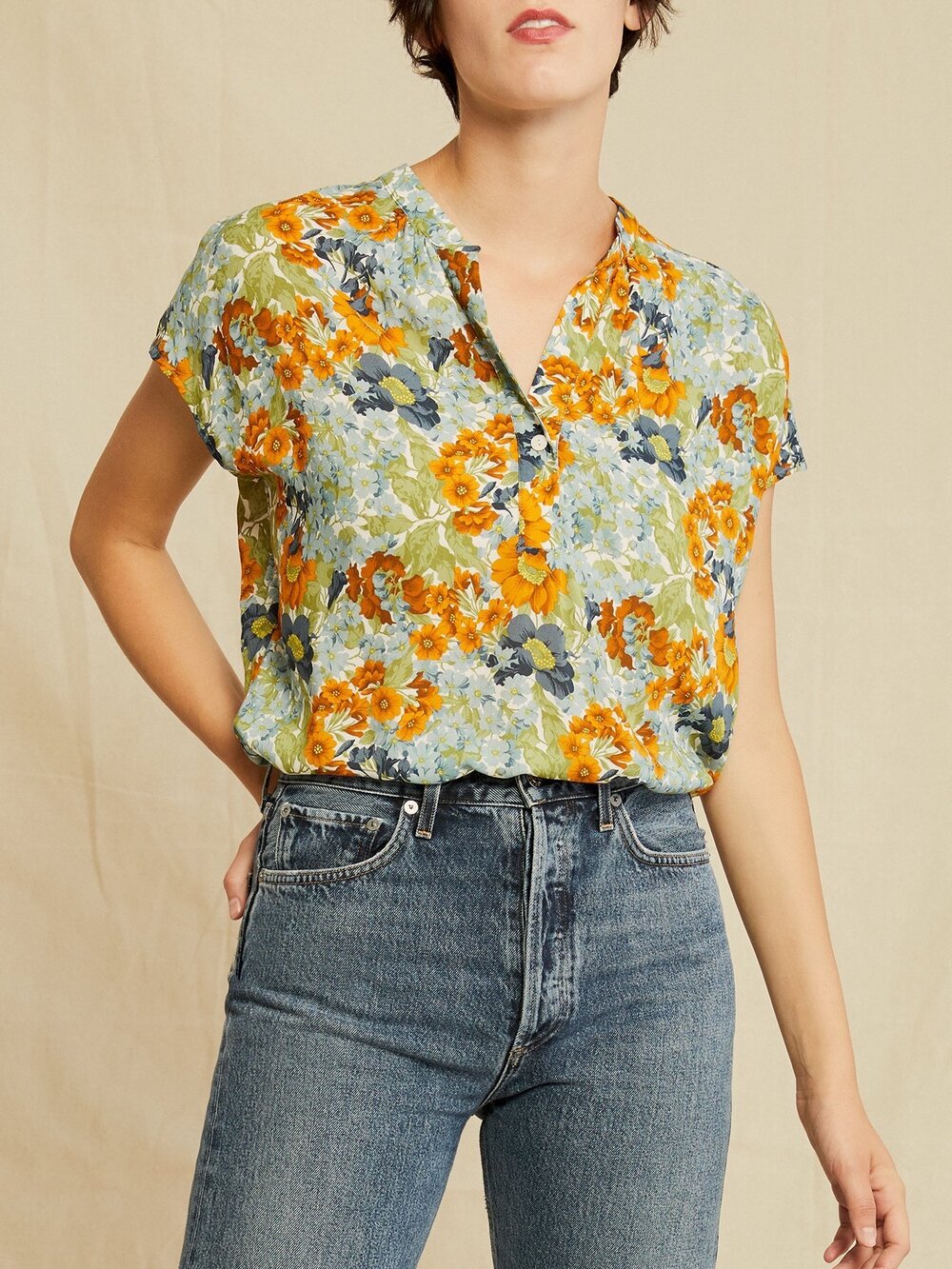
Amour Vert
Another great sustainable brand using Ecovero for lovely, vibrant prints and designs!
This brand uses a lot of sustainable fabrics like TENCEL, Organic Cotton, & Hemp - and it’s great to see a few Ecovero pieces thrown into the mix.
Amour Vert makes 97% of their clothing right here in the US, and their packaging is eco-friendly & compostable.

Elk
Elk uses a significant portion of ‘green-shirt’ rated cellulose materials and traceable viscose. By weight, Ecovero, Tencel and other certified more sustainable cellulose materials made up nearly a quarter of Elk’s fabrics. Elk is in the process of phasing out any conventional viscose, though this is a process.
In Elk’s collection of more sustainable viscose, you’ll find collared shirts, dresses, pants, tops, jumpsuits, velvet pants and jackets, co-ord sets, tanks, and more. This is an extremely extensive collection!

About the Author
Emma Håkansson is the founder and director of Collective Fashion Justice which seeks to create a total ethics fashion system that prioritizes the life and wellbeing of non-human & human animals, as well as the planet, before profit & production. She has written countless articles on ethics, sustainability, and fashion, and has two books due out over the next two years.

PIN THE PHOTO TO SAVE THIS POST FOR LATER
We are constantly updating blog posts to give you the best in sustainable fashion, beauty and lifestyle.
This post contains affiliate links.
As always, views are genuine and brands are truly loved.
Thanks for supporting the brands who are working to make this industry a fairer and cleaner place!
WANT MORE SUSTAINABLE BRANDS? VISIT OUR BRAND DIRECTORY!
Our Brand Directory is home to hundreds of sustainable brands, from makeup to cleaning supplies, from underwear to shoes. We have broken everything down by category for easy shopping, along with discount codes unique to Sustainably Chic viewers.
Browse Our Sustainable Brand Directoryrelated reading you may also enjoy:
#Content-Attribution#
Content Creator: Emma Håkansson
Date:
